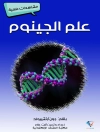A comprehensive, authoritative look at an emergent area in
post-genomic science, Evolutionary genomics is an up-and-coming,
complex field that attempts to explain the biocomplexity of the
living world. Evolutionary Genomics and Systems Biology is
the first full-length book to blend established and emerging
concepts in bioinformatics, evolution, genomics, and structural
biology, with the integrative views of network and systems biology.
Three key aspects of evolutionary genomics and systems biology
are covered in clear detail: the study of genomic history, i.e.,
understanding organismal evolution at the genomic level; the study
of macromolecular complements, which encompasses the evolution of
the protein and RNA machinery that propels life; and the
evolutionary and dynamic study of wiring
diagrams–macromolecular components in interaction–in
the context of genomic complements. The book also features:
* A solid, comprehensive treatment of phylogenomics, the
evolution of genomes, and the evolution of biological networks,
within the framework of systems biology
* A special section on RNA biology–translation, evolution
of structure, and micro RNA and regulation of gene expression
* Chapters on the mapping of genotypes to phenotypes, the role of
information in biology, protein architecture and biological
function, chromosomal rearrangements, and biological networks and
disease
* Contributions by leading authorities on each topic
Evolutionary Genomics and Systems Biology is an ideal
book for students and professionals in genomics, bioinformatics,
evolution, structural biology, complexity, origins of life,
systematic biology, and organismal diversity, as well as those
individuals interested in aspects of biological sciences as they
interface with chemistry, physics, and computer science and
engineering.
Daftar Isi
Preface.
Contributors.
Part I. Evolution of Life.
1. Evolutionary Genomics Leads the Way (David Penny and Lesley J. Collins).
2. Current Approaches to Phylogenomic Reconstruction (Denis Baurain and Hervé Philippe).
3. The Universal Tree of Life and the Last Universal Cellular Ancestor: Revolution and Counterrevolutions (Patrick Forterre).
4. Eukaryote Evolutions: The Importance of the Stem Group (Anthony M. Poole).
5. The Role of Information in Evolutionary Genomics of Bacteria (Antoine Danchin and Agnieszka Sekowska).
6. Evolutionary Genomics of Yeasts (Bernard Dujon).
Part II. Evolution of Molecular Repertoires.
7. Genotypes and Phenotypes in the Evolution of Molecules (Peter Schuster).
8. Genome Evolution Studies Through Protein Structure (Philip E. Bourne, Kristine Briedis, Christopher Dupont, Ruben Valas, and Song Yang).
9. Chromosomal Rearrangements in Evolution (Hao Zhao and Guillaume Bourque).
10. Molecular Structure and Evolution of Genomes (Todd A. Castoe, A. P. Jason de Koning, and David D. Pollock).
11. The Evolution of Protein Material Costs (Jason G. Bragg and Andreas Wagner).
12. Protein Domains as Evolutionary Units (Andrew D. Moore and Erich Bornberg-Bauer).
13. Domain Family Analyses to Understand Protein Function Evolution (Adam James Reid, Sarah Addou, Robert Rentzsch, Juan Ranea, and Christine Orengo).
14. Noncoding RNA (Alexander Donath, Sven Findeibeta, Jana Hertle, Manja Marz, Wolfgang Otto, Christine Schulz, Peter F. Stadler, and Stefan Wirth).
15. Evolutionary Genomics of micro RNAs and Their Relatives (Andrea Tanzer, Markus Reister, Jana Hertel, Clara Isabel Bermudez-Santana, Jan Gorodkin, Ivo L. Hofacker, and Peter F. Stadler).
16. Phylogenetic Utility of RNA Structure: Evolution’s Arrow and Emergence of Early Biochemistry and Diversified Life (Feng-Jie Sun, Ajith Harish, and Gustavo Caetano-Anollés).
Part III. Evolution of Biological Networks.
17. A Hitchhiker’s Guide to Evolving Networks (Charles G. Kurland and Otto G. Berg).
18. Evolution of Metabolic Networks (Eivind Almaas).
19. Single-Gene and Whole-Genome Duplications and the Evolution of Protein-Protein Interaction Networks (Grigoris Amoutzias and Yves Van de Peer).
20. Modularity and Dissipation in Evolution of Macromolecular Structures, Functions, and Networks (Gustavo Caetano-Anollés, Liudmila Yafremava, and Jay E. Mittenthal).
Index.
Tentang Penulis
Gustavo Caetano-Anollés, Ph D, is Professor in the Department of Crop Sciences at the University of Illinois in Urbana-Champaign, Illinois. He has more than 150 well-cited original research publications in areas related to DNA technology and genomics, and holds half a dozen US patents in various areas of DNA science and biotechnology. His successful book, DNA Markers: Protocols, Applications, and Overviews, was published by Wiley in 1997.












